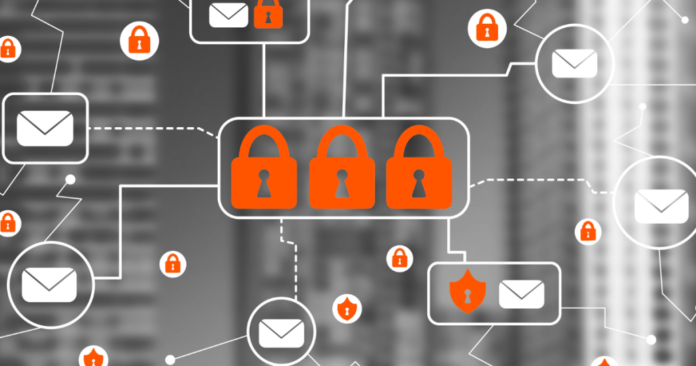In today’s hyperconnected world, email remains one of the most vital forms of communication. Whether it’s personal correspondence or business exchanges, the security of your email should never be overlooked. If you’re a user of PeoplePC Webmail, maintaining your online safety is especially crucial. While PeoplePC offers basic email services, it doesn’t always come equipped with advanced security protocols found in modern platforms. This makes it all the more important for users to take initiative in safeguarding their information.
In this comprehensive article, we’ll explore essential PeoplePC Webmail security tips you should know to help you stay protected from threats such as phishing, hacking, malware, and unauthorized access.
1. Use a Strong and Unique Password
The most basic and effective security tip starts with your password. Your PeoplePC Webmail account is only as secure as your password.
Best practices include:
-
At least 12 characters long
-
Combination of uppercase and lowercase letters, numbers, and special characters
-
Avoid using names, birthdays, or dictionary words
-
Do not reuse passwords from other sites
Bonus Tip: Use a password manager to generate and store complex passwords securely.
2. Enable Two-Factor Authentication (2FA)
While PeoplePC Webmail does not natively support modern two-factor authentication methods like app-based codes or biometric login, users can still enhance protection by linking PeoplePC to email clients (like Outlook or Thunderbird) that support 2FA through integrated mail access. If using such software, ensure the device itself has a 2FA option and is password-protected.
Why 2FA matters: Even if your password is compromised, 2FA adds an additional layer that blocks unauthorized access.
3. Be Wary of Phishing Scams
Phishing is one of the most common cyberattacks targeting email users, especially on legacy platforms like PeoplePC.
Red flags to watch for:
-
Emails requesting personal information or passwords
-
Urgent tone demanding immediate action
-
Unfamiliar sender addresses or odd URLs
-
Attachments or links you weren’t expecting
Pro tip: Always verify the sender before clicking anything. When in doubt, go directly to the PeoplePC website to check messages or account status rather than clicking email links.
4. Keep Your Device and Software Updated
Security vulnerabilities in outdated software can be exploited by attackers to gain access to your PeoplePC Webmail.
Make sure to:
-
Regularly update your operating system (Windows/macOS/Linux)
-
Keep antivirus and anti-malware software current
-
Use a modern, secure browser for accessing webmail (like Firefox, Chrome, or Edge)
-
If you use a mail client, keep it updated too (e.g., Outlook, Thunderbird)
Updated software includes essential security patches that block common cyberattack methods.
5. Avoid Public Wi-Fi Without a VPN
Accessing your PeoplePC Webmail on public networks (like those in cafes, airports, or libraries) puts your data at risk of interception.
To stay safe:
-
Use a VPN (Virtual Private Network) when accessing email from public locations
-
Avoid logging into email accounts when using unsecured or unknown networks
-
Never check sensitive information without protection
VPNs encrypt your connection, preventing hackers on the same network from reading your data.
6. Check for Unauthorized Account Activity
PeoplePC users should regularly review their email account for signs of unauthorized access.
What to look for:
-
Unfamiliar sent messages
-
Missing emails
-
Login notifications from unknown devices
-
Unexpected password change emails
If anything seems off, change your password immediately and contact PeoplePC support.
7. Clear Browser Cache and Cookies Regularly
When you log into your webmail account, your browser stores certain information in cookies and cache. This data can be exploited if someone gains access to your computer.
Make it a habit to:
-
Log out of your PeoplePC Webmail when done
-
Clear cookies, cache, and saved passwords weekly
-
Use browser private mode (Incognito Mode) when accessing sensitive accounts
8. Limit Third-Party Access
If you use any services or tools that request access to your email account, be very cautious.
Tips:
-
Only allow access to tools you trust
-
Revoke permissions for unused or suspicious services
-
Be cautious when integrating email with unknown apps or platforms
Third-party services can introduce vulnerabilities or misuse your email data.
9. Enable Spam and Junk Mail Filters
PeoplePC Webmail includes basic spam filtering, but users should actively manage it to reduce risks.
Steps to take:
-
Mark suspicious emails as “Spam” to train the filter
-
Avoid opening or interacting with obvious junk mail
-
Create rules to automatically sort or delete unwanted messages
Spam filters help reduce exposure to malicious links or scams.
10. Backup Important Emails
While not a direct security feature, backing up important emails protects you from data loss due to account compromise, accidental deletion, or system failure.
How to backup:
-
Use email clients like Thunderbird or Outlook to download and store emails locally
-
Export email folders periodically
-
Use cloud storage services with strong encryption for secure archiving
Don’t rely solely on your inbox to store critical information.
Bonus Tip: Stay Educated
Cybersecurity threats evolve constantly. One of the best defenses is to stay informed.
Ways to stay ahead:
-
Subscribe to cybersecurity newsletters or blogs
-
Follow trusted sources like Krebs on Security, Cybersecurity & Infrastructure Security Agency (CISA), or Norton Security Blog
-
Participate in email security training if available
Education empowers you to recognize and respond to threats effectively.
Conclusion
While PeoplePC Webmail may not have the advanced features of newer email platforms, you can still take meaningful steps to secure your account. From using strong passwords and staying alert for phishing to regularly updating your software and practicing safe browsing habits, these actions can dramatically reduce your risk of email-related cyberattacks.
Think of email security as a shared responsibility between your service provider and yourself. In PeoplePC’s case, it’s crucial that you take an active role in protecting your data. With the tips shared in this article, you’re now equipped to create a safer and more secure digital mailbox experience.
